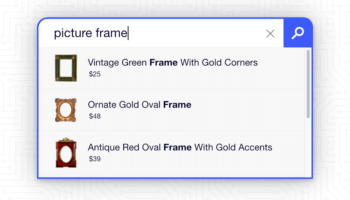When styling aspects of your website, it’s not unusual to need to target numerous similar items at once. Your code can get lengthy, repetitive and complex. Fortunately, the :is() pseudo-class selector introduced in the Selectors Level 4 specification can help simplify it.
Using the :is() Selector
Example 1
A common scenario where you can use :is() is when you want to modify any heading under the same conditions, like when links are inside of headings.
Normally, this is what that selector would need to look like:
h1 a, h2 a, h3 a, h4 a, h5 a, h6 a {
color: red;
}And to style the links on hover you’d also need:
h1 a:hover, h2 a:hover, h3 a:hover, h4 a:hover, h5 a:hover, h6 a:hover {
color: dark-red;
}The :is() pseudo-class selector simplifies these with the resulting selectors:
:is(h1, h2, h3, h4, h5, h6) a {
color: red;
}:is(h1, h2, h3, h4, h5, h6) a:hover {
color: dark-red;
}By supplying a group of selectors to match as part of a longer selector, :is() saves repeating common aspects of your longer selector, increasing the readability and maintainability of your code.
Example 2
Another example would be if you needed to style an element differently when it’s inside a few different parent containers. Maybe you want to style your shop’s product images in a unique way when they are used in a few of the layout components you built.
In this scenario, your code may look something like this:
.component-type-one .product img, .component-type-two .product img, component-type-four .product img {
aspect-ratio: 1.33/1;
}.component-type-three .product img, .component-type-five .product img {
aspect-ratio: 1/1.33;
}With the :is() pseudo-class selector, those can now be written as:
is:( .component-type-one, .component-type-two, .component-type-four ) .product img {
aspect-ratio: 1.33/1;
}is:( .component-type-three, .component-type-five ) .product img {
aspect-ratio: 1/1.33;
}Then, when you build your sixth and later components, you only need to add those classes to the existing lists, and not write completely new selectors.
:is() Selector Specificity and Forgiveness
When providing a comma-separated list of targets, all items get the specificity value of the most-specific item. This means that a selector written using :is() can have a different specificity than the same selector written without using :is().
In the following example, even though both rules target an item with a class of foo where typically the second matching rule would be blue, since the first rule includes a more specific selector of div.bar the first .foo will result in the element having a red background color.
:is( .foo, div.bar ) {
background-color: red;
}.foo {
background-color: blue;
}:is() is a forgiving selector. That means that unlike typical CSS selectors where an entire statement is invalid if any part is invalid, an invalid item in your comma-separated list does not break all valid items.
For more details on specificity and selector forgiveness, read our previous post on :has(), which shares the same characteristics.
The CSS pseudo-class :is() is available in all modern browsers so you can start writing your CSS with it today.
For further web development assistance, contact our experts today.





